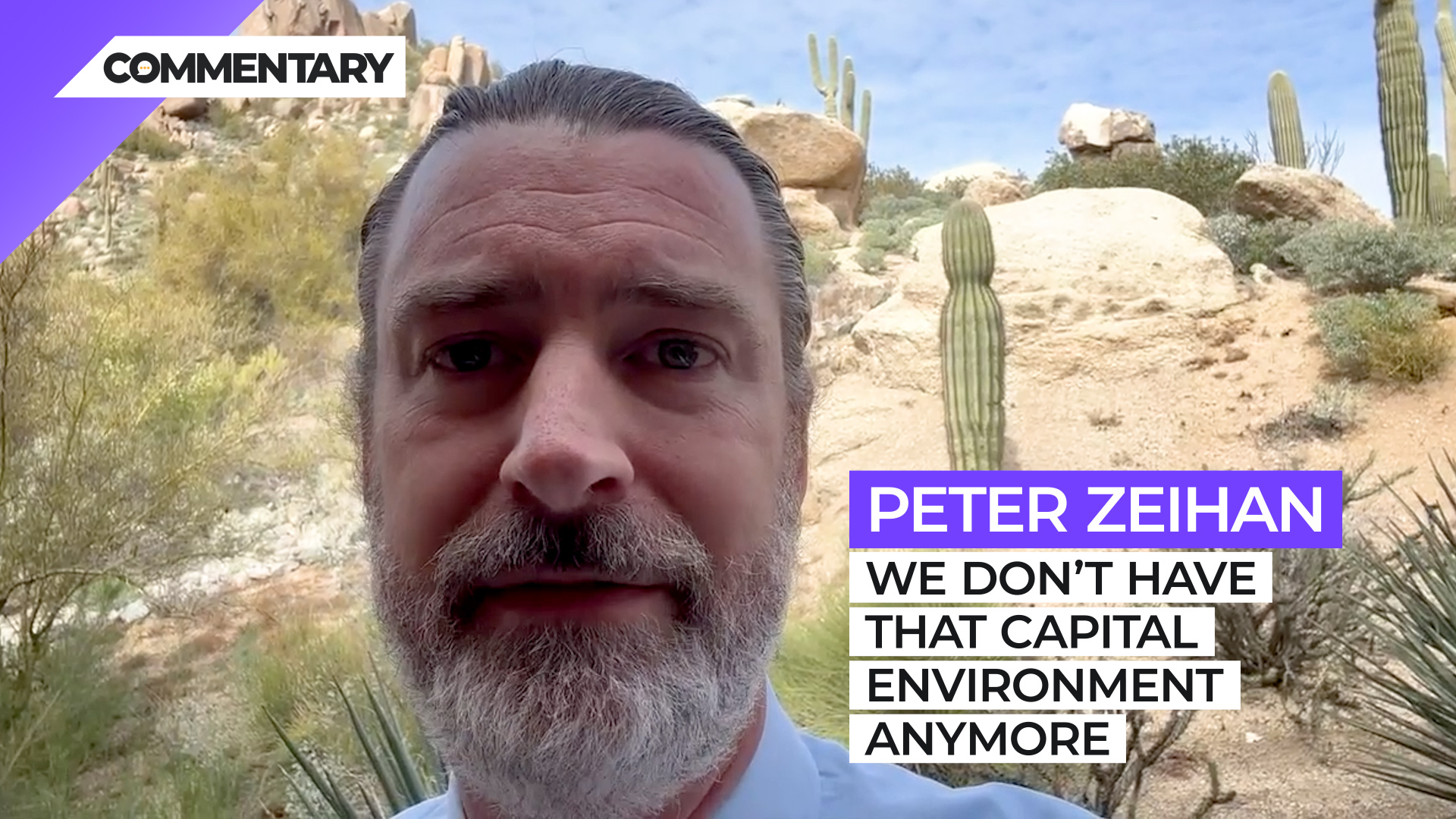
Commentary
-
Our commentary partners will help you reach your own conclusions on complex topics.
Hey everyone, Peter design here coming to you from Phoenix, a city so artificial, it makes Vegas look like a nature preserve. I just want to spend a couple minutes real quick talking about actually answering a question that a lot of you have sent in. And that is in a world where we’re in deep demographic decline. And we’re facing the loss of consumption across the board and the dislocations that come to that for economics and trade. Can automation help solve some of these problems? So first, the backdrop, the birth rates started dropping precipitously in the industrial era, and then really doubling down at the end of World War Two when the Americans created globalization and then tripling down in the 1990s, when a lot of what had not been part of the global system. Your China’s your Russia is your Brazil’s joined in, everyone started industrializing and urbanizing. And birth rates went just just plummeted through the floor, until we got to the point where we are today in places in China and Korea, where birth rates are births per woman are now below point seven, and 2.1 is the replacement level. You play that forward for decades, and how we’re running out of people to have countries in the not too distant future. You know, historically speaking, now, the picture is different country by country. But it does raise the question and this is a good one, whether automation can help us with the workforce? And the answer is probably not and the short version, the longer version is you need two things. In order to maintain a trading network and economics as we understand them. The first one is consumption. Theoretically, automation can help with the production side of the equation, but machines don’t consume. So there’s no reason to expect a broad automation push is actually going to solve that unless you’re part of a system where there already is consumption. So in places like the United States and Mexico where birth rates are still reasonably high, and we’re not facing the kind of crash we’re seeing in Italy, or Germany, or Belgium, or the Netherlands, or Greece, or Spain or Brazil, or China or Korea or Japan or you get the idea. You know, it might work. So in those systems that are already the most sustainable automation can absolutely be part of the solution. But the second broader problem is capital. As you retire, you liquidate your investments and you go into T bills in cash, because if there’s a currency crash or a market crash, you’re you’re just out of luck. Well, that speculative capital back when you were investing in stocks and bonds, that’s what drives the tech sector. A successful tech sector requires not just loads of 20 and 30 somethings to do the work people we don’t have anymore, but a lot of capital to pay them for years before their investments actually bear fruit. And only then do you also need capital in order to pay for the prototyping and the operationalization and the build out and ultimately, the maintenance of all these systems. And we don’t have that capital environment anymore, either. So they’re just very few places in the world where tech in general in automation in specific can actually part be part of the solution. We’re gonna have to figure out different ways of doing things and for most of the world, that means doing less. All right, that’s it for me. Next up, perhaps Vegas
-
Hurricane Helene hits US coast, Appalachia and beyond
Hurricane Helene hit Florida and Georgia overnight between Sept. 26 and 27 as a Category 4 hurricane, and accompanying storms will continue reaching deeper into the continental United States today. Dangerous flash flooding from the hurricane, known as storm surge, was some of the worst flooding that the Tampa Bay area has ever seen, and… -
Israel holds upper hand against Lebanon, Hezbollah and Iran
On Wednesday, Sept. 25, Hezbollah launched a ballistic missile at Tel Aviv in retaliation for Israel’s explosive pager attack that blew up devices across Lebanon. Although Israel’s defense systems intercepted the surface-to-surface missile, the attempted strike on Tel Aviv marked a significant escalation by Hezbollah. Since the siege on Gaza began, shortly after the Oct. 7, 2023,… -
The Sinaloa Cartel civil war
Fears of a civil war within the Sinaloa Cartel are growing as violence between competing factions within the cartel continues. The Mexican Army has dispatched around 600 elite troops to Sinaloa to help quell those fears, in addition to roughly 2,200 regular soldiers and National Guard. Watch the above video as Straight Arrow News contributor… -
New Ukrainian weapons hit Russia where it hurts
Ukrainian drones struck a major Russian ammunition depot, triggering a massive explosion that was captured on camera. According to the Ukrainian military, 2,000 tons of munitions had arrived at the depot before the attack. Over the past two years, Ukraine has significantly increased its domestic drone production, allowing it to scale up attacks on military… -
Weighing social costs vs. economic benefits on immigration
Global human migration is one of the defining elements of our current historical era, according to the United Nations. Migrants face both the incentives to leave — forced out by climate change, crime and corruption, extreme poverty or violence — and incentives for where to go, based on available job opportunities and so on. Migration…
Latest Stories
-
 Getty Images
Getty Images
Democrats want DOJ attorney who dropped Eric Adams case investigated
-
 Getty Images
Getty Images
Millions of users’ personal data shared with US law enforcement: Report
-
 Getty Images
Getty Images
Republican leaders urge a pause on town hall meetings
-
 Getty Images
Getty Images
Media spins Trump, Zelenskyy Oval Office meeting: Bias Breakdown
-
 Getty Images
Getty Images
Dems criticize Trump saying he’d lower prices on day 1: ‘S— ain’t true’
Popular Opinions
-
In addition to the facts, we believe it’s vital to hear perspectives from all sides of the political spectrum.
Latest Opinions
In addition to the facts, we believe it’s vital to hear perspectives from all sides of the political spectrum. We hope these different voices will help you reach your own conclusions.
The opinions published in this section are solely those of the contributors and do not reflect the views of Straight Arrow News.





















Latest Commentary
We know it is important to hear from a diverse range of observers on the complex topics we face and believe our commentary partners will help you reach your own conclusions.
The commentaries published in this section are solely those of the contributors and do not reflect the views of Straight Arrow News.
Dr. Frank Luntz
Pollster and Political Analyst‘Biased’: What Americans think of ‘mainstream media’
‘Getting rid of them’: Americans discuss Trump and immigration
‘Woke’: Why some Biden 2020 voters backed Trump in 2024